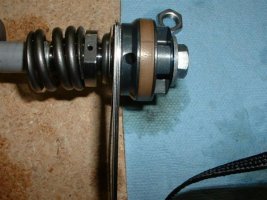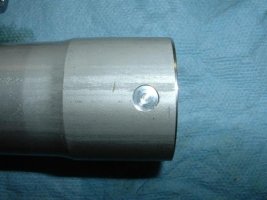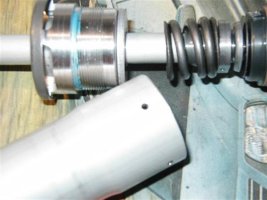marcusgunby
LIFETIME SPONSOR
- Jan 9, 2000
- 6,450
- 2
heres the pics bruce sent me-notice the feeler gauges to measure the lift-you need to remove the spring that pushes the shim stack closed so you can measure the lift easier-otherwise the spring pushes the shims against the feeler gauge and you get inaccurate readings.Its not possible to get very accurate readings on this.I go for 0.25mm increments.Once i set a lift and decide to modify it i just add/subtract spacing shims and calc the new lift.It doesnt have to be exact as you just need to ride it and feel which way you want to go.
Attachments
Last edited:




